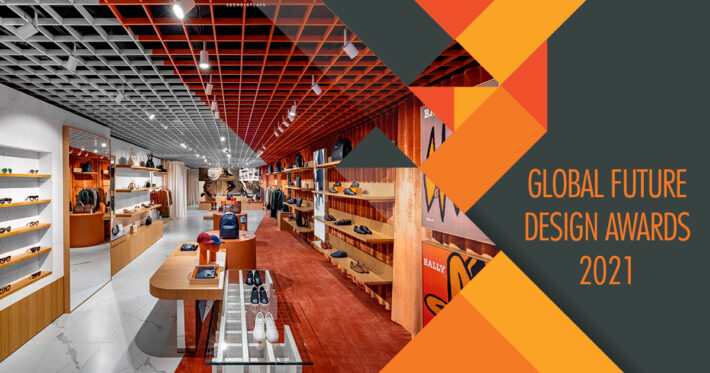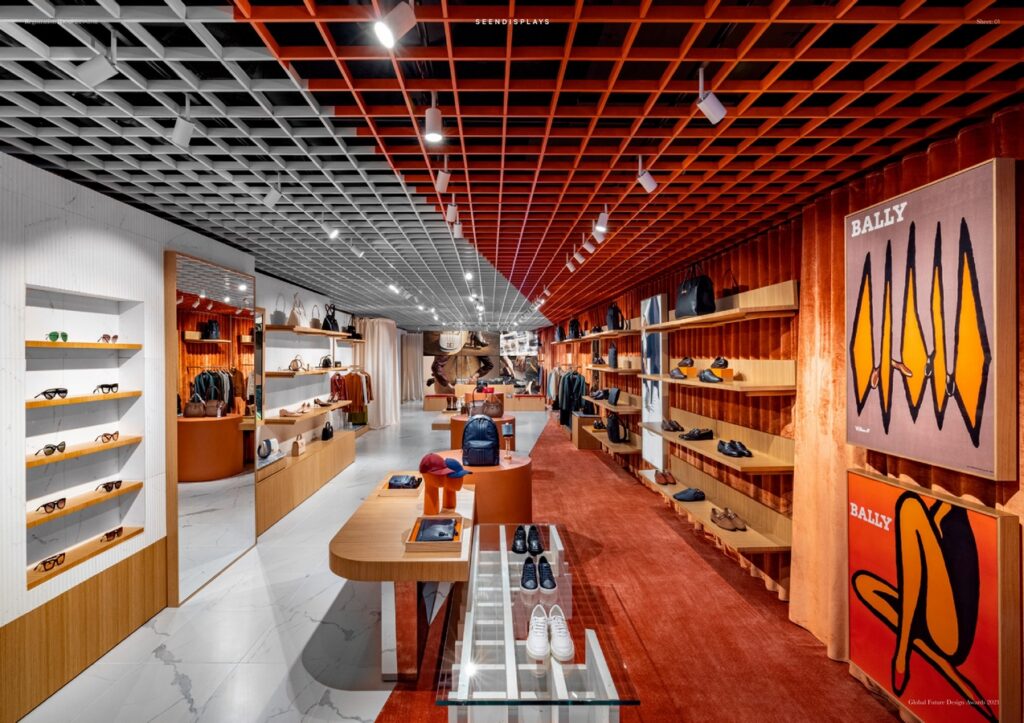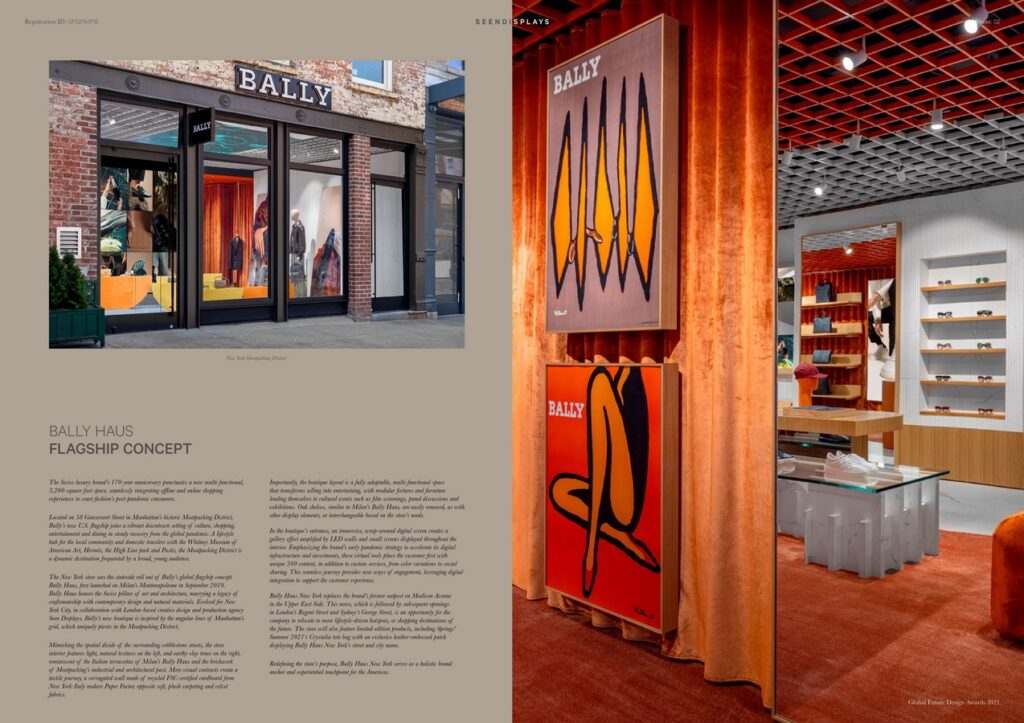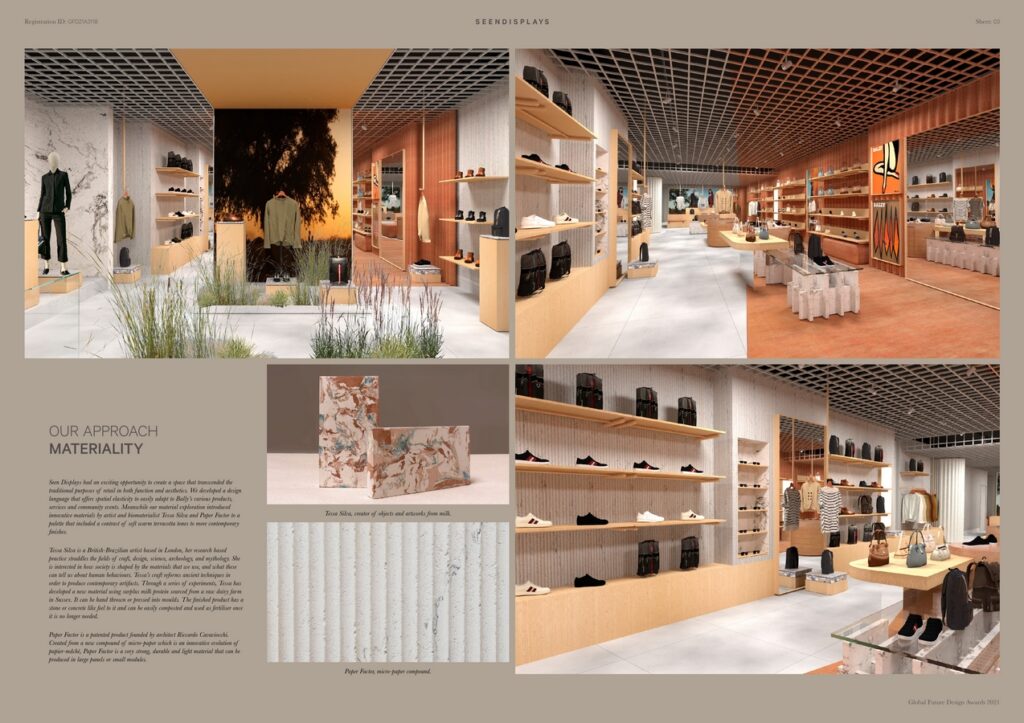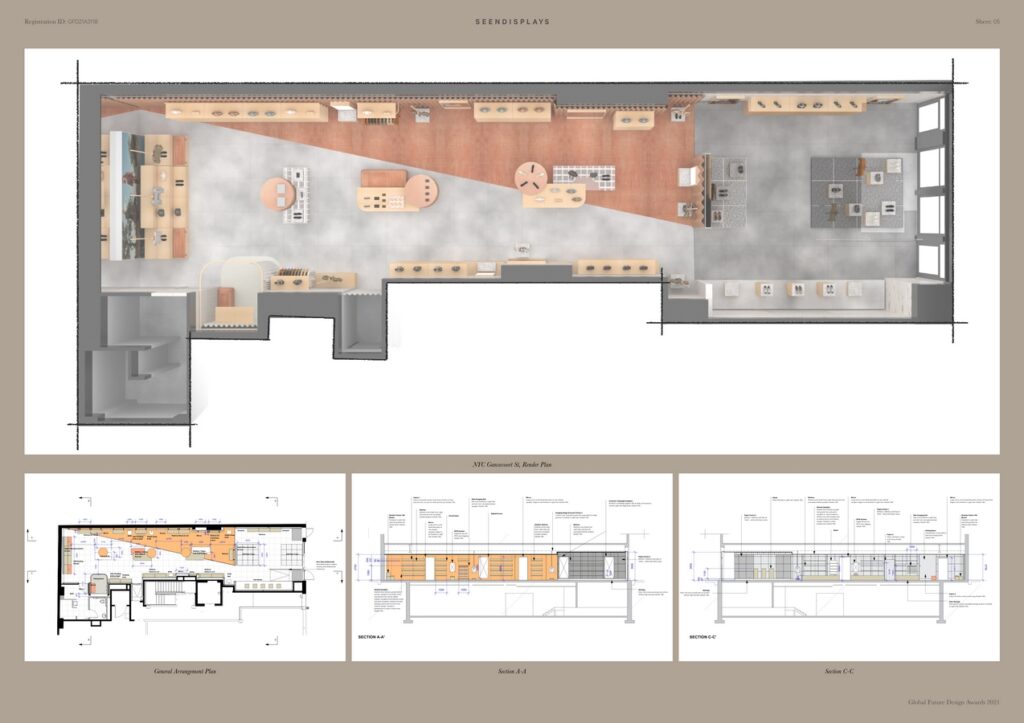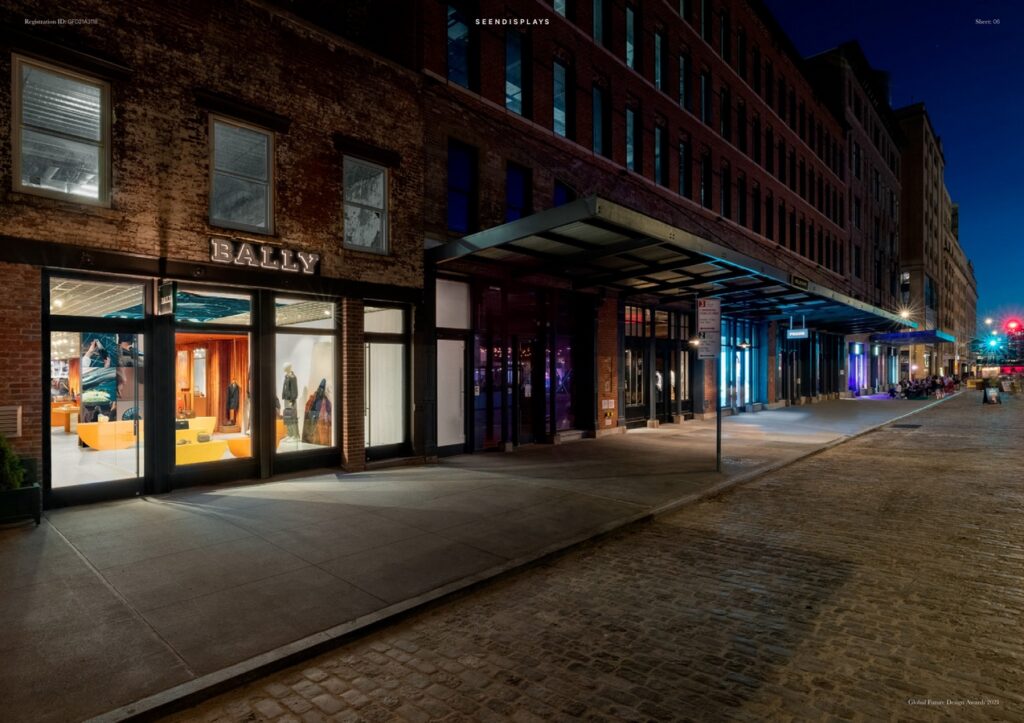The Swiss luxury brand’s 170-year anniversary punctuates a new multi-functional,
3,200-square-foot space, seamlessly integrating offline and online shopping
experiences to court fashion’s post-pandemic consumers.
Global Future Design Awards 2022: Discounted Entries Open Now! Save $50
Super Early Discount – 20th October 2021 to 30th December 2021 – $199 = $149
🏆 Second Award
Global Future Design Awards 2021
Bally Haus Flagship Concept | New York Meatpacking District
Pop-Ups Design Built
Firm
Seen Displays
Architect/Designer
Seen Displays
Design Team
Moe Krimat, Andrew Quinn, Jeremy Hartwell, Eve Karanikki
Location
New York City
Country
United Kingdom
Photographer/Copyright
©Tom Silbey
Located on 58 Gansevoort Street in Manhattan’s historic Meatpacking District,
Bally’s new U.S. flagship joins a vibrant downtown setting of culture, shopping,
entertainment and dining in steady recovery from the global pandemic. A lifestyle
hub for the local community and domestic travelers with the Whitney Museum of
American Art, Hermès, the High Line park and Pastis, the Meatpacking District is
a dynamic destination frequented by a broad, young audience.
The New York store sees the stateside roll out of Bally’s global flagship concept
Bally Haus, first launched on Milan’s Montenapoleone in September 2019.
Bally Haus honors the Swiss pillars of art and architecture, marrying a legacy of
craftsmanship with contemporary design and natural materials. Evolved for New
York City, in collaboration with London-based creative design and production agency
Seen Displays, Bally’s new boutique is inspired by the angular lines of Manhattan’s
grid, which uniquely pivots in the Meatpacking District.
Mimicking the spatial divide of the surrounding cobblestone streets, the store
interior features light, natural textures on the left, and earthy clay tones on the right,
reminiscent of the Italian terracottas of Milan’s Bally Haus and the brickwork
of Meatpacking’s industrial and architectural past. More visual contrasts create a
tactile journey, a corrugated wall made of recycled FSC-certified cardboard from
New York-Italy makers Paper Factor, opposite soft, plush carpeting and velvet
fabrics.
Importantly, the boutique layout is a fully adaptable, multi-functional space
that transforms selling into entertaining, with modular fixtures and furniture
lending themselves to cultural events such as film screenings, panel discussions and
exhibitions. Oak shelves, similar to Milan’s Bally Haus, are easily removed, as with
other display elements, or interchangeable based on the store’s needs.
In the boutique’s entrance, an immersive, wrap-around digital screen creates a
gallery effect amplified by LED walls and small screens displayed throughout the
interior. Emphasizing the brand’s early pandemic strategy to accelerate its digital
infrastructure and investments, these virtual tools place the customer first with
unique 360 content, in addition to custom services, from color variations to social
sharing. This seamless journey provides new ways of engagement, leveraging digital
integration to support the customer experience.
Bally Haus New York replaces the brand’s former outpost on Madison Avenue
in the Upper East Side. This move, which is followed by subsequent openings
in London’s Regent Street and Sydney’s George Street, is an opportunity for the
company to relocate to more lifestyle-driven hotspots, or shopping destinations of
the future. The store will also feature limited-edition products, including Spring/
Summer 2021’s Crystalia tote bag with an exclusive leather-embossed patch
displaying Bally Haus New York’s street and city name.
Redefining the store’s purpose, Bally Haus New York serves as a holistic brand
anchor and experiential touchpoint for the Americas.
Seen Displays had an exciting opportunity to create a space that transcended the
traditional purposes of retail in both function and aesthetics. We developed a design
language that offers spatial elasticity to easily adapt to Bally’s various products,
services and community events. Meanwhile our material exploration introduced
innovative materials by artist and biomaterialist Tessa Silva and Paper Factor to a
palette that included a contrast of soft warm terracotta tones to more contemporary
finishes.
Tessa Silva is a British-Brazilian artist based in London, her research based
practice straddles the fields of craft, design, science, archeology, and mythology. She
is interested in how society is shaped by the materials that we use, and what these
can tell us about human behaviours. Tessa’s craft reforms ancient techniques in
order to produce contemporary artifacts. Through a series of experiments, Tessa has
developed a new material using surplus milk protein sourced from a raw dairy farm
in Sussex. It can be hand thrown or pressed into moulds. The finished product has a
stone or concrete like feel to it and can be easily composted and used as fertiliser once
it is no longer needed.
Paper Factor is a patented product founded by architect Riccardo Cavaviocchi.
Created from a new compound of micro-paper which is an innovative evolution of
papier-mâché, Paper Factor is a very strong, durable and light material that can be
produced in large panels or small modules.
Registrations open… Don’t miss the opportunity to win with your visionary projects.


